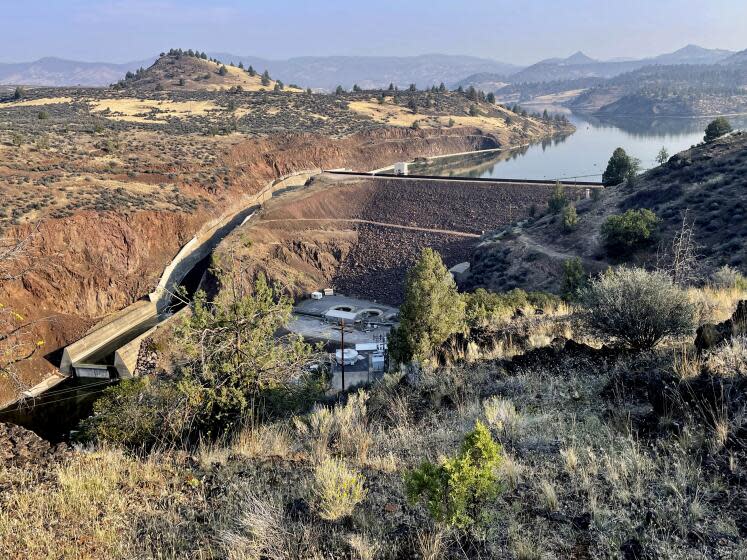Shasta Indian Nation to get homeland back in largest land return in California history

Gov. Gavin Newsom has set in motion the largest land return in California history, declaring his support for the return of ancestral lands to the Shasta Indian Nation that were seized a century ago and submerged.
The 2,800 acres in Siskiyou County are part of the Klamath River dam removal project, which will rehabilitate more than 300 miles of salmon habitat.
"This is a down payment on the state's commitment to do better by the Native American communities who have called this land home since time immemorial," Newsom said in a statement. The governor's announcement Tuesday marked the fifth anniversary of California's official apology to its Native American peoples for the state's historical wrongdoings.
Newsom said the move was part of "healing deep wounds and rebuilding trust."
The state has previously worked to return ancestral lands to the Fort Independence Indian Community, the Lone Pine Paiute-Shoshone Reservation, the Mechoopda Indian Tribe of Chico Rancheria and the Wiyot tribe. The Mechoopda tribe received more than 90 acres, and the rest of the returned lands were around 40 acres each, according to Lindsay Bribiescas, spokesperson for the governor's office of tribal affairs.
Returning the ancestral land to Shasta Indian Nation was also supported by Siskiyou County last year. In November, the county Board of Supervisors unanimously voted to send a letter of support to the California Department of Fish and Wildlife.
Fish and Wildlife, along with the California Natural Resources Agency, will work with the Shasta Indian Nation on the legal return of the lands.
Shasta's ancestors inhabited the lands around Copco Lake near Bogus Mountain before there were formal records of the area, according to Siskiyou County Board of Supervisors meeting documents. Traditionally, the land was known as Kíkacéki.
After the Gold Rush, Shasta Indians worked to reclaim their historical community by purchasing or homesteading land parcels; some "squatted" on newly privatized lands they did not own. The document states that some Shasta women would strategically marry or cohabitate with non-Indian men who purchased parcels, with the women eventually gaining control of a significant portion of the land.
But in 1911, the land was taken from tribal members by eminent domain on behalf of the companies that would construct Copco No. 1 Dam, forcing members to relocate.
Now, more than 100 years later, with the removal of Copco and other dams, the land has reemerged, and tribal members remain eager for its return.
"Having access to our ceremonial sites, including the site of our First Salmon Ceremony, is critical to the spiritual and emotional health of our people," said Janice Crowe, chairperson for the Shasta Indian Nation.
Returning the land allows the Shasta Indian Nation to complete the Shasta Heritage Trail, an educational pathway whose design incorporates Native art along with informational placards that share the history of the Kíkacéki, Crowe said in a statement.
This announcement is part of a larger effort to amend California's historical offenses against Native American communities.
At the time of California's formal apology, Newsom also established the California Truth and Healing Council to clarify the historical record, he said, and provide an opportunity for collaboration between the tribes and the state.
Programs and initiatives that grew out of it include conservation of 30% of lands and coastal waters by 2030, a grant program to return lands to tribal ownership, and the establishment of agreements with tribes to ensure they have access to, or can co-manage, areas within state parks that have significance for them.
It's unclear when the ancestral lands will be officially returned to the Shasta Indian Nation.
This story originally appeared in Los Angeles Times.


